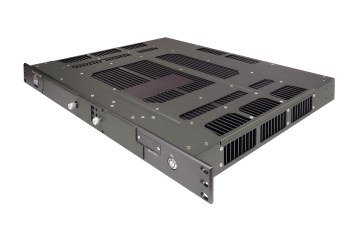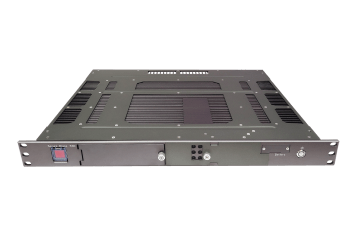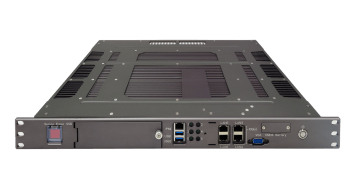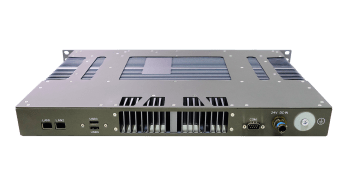HORUS200
1U Short Depth(380mm) rugged workstation with Intel® Xeon® D-1587 Processor (16 Cores), 128GB DDR4 ECC RDIMM, MIL-STD 461/1275, 10-Gigabit Ethernet, 6x Ethernet, Hardware Secure Erase, 12V~40V DC-Input
- 1U Short Depth (380mm) Rugged VMware Workstation
- MIL-STD-810G Thermal, Shock, Vibration, Humidity
- MIL-461/1275 EMI/EMC Certified
- 16 Cores Intel® Xeon® D-1587 VMware Support
- 128GB DDR4 ECC RDIMM
- 10-Gigabit Ethernet support
- Dual Removable Solid-State Disk
- Hardware Secure Erase (AES Key)
- Windows 10/Server, Linux, VMware Compatible
- 12V~40V DC MIL-1275/461 Power Supply
- Extreme Temperature -20°C to +60°C

- Technical Profile
- Specifications
- CPU
- Thermal Solution
- Download
- Introduction
-
HORUS200, 19" 1U short depth (385mm) Rackmount Fanless Workstation is driven by Intel® Xeon®D-1587 (2.3GHz, 16 Cores, 32 Threads, 24MB Cache), providing superior performance in data processing and supporting high flexibility in application. HORUS200 is an ideal solution for C4ISR with its design under consideration of efficiency, security, convenience, and ruggedness. HORUS200 equipped with dual 10-Gigabit and quad-Gigabit Ethernet, undeniably a great system for simultaneous data handling. Designed with removable solid-state disk and hardware secure erase enhance the mobility of this solution, plus MIL-STD-1275/704/461/810G Compliance, HORUS200 can be highly adaptable in harsh and unpredictable environment.
* C4ISR: A military terminology. Command, Control, Communications, Computers, Intelligence, Surveillance, Reconnaissance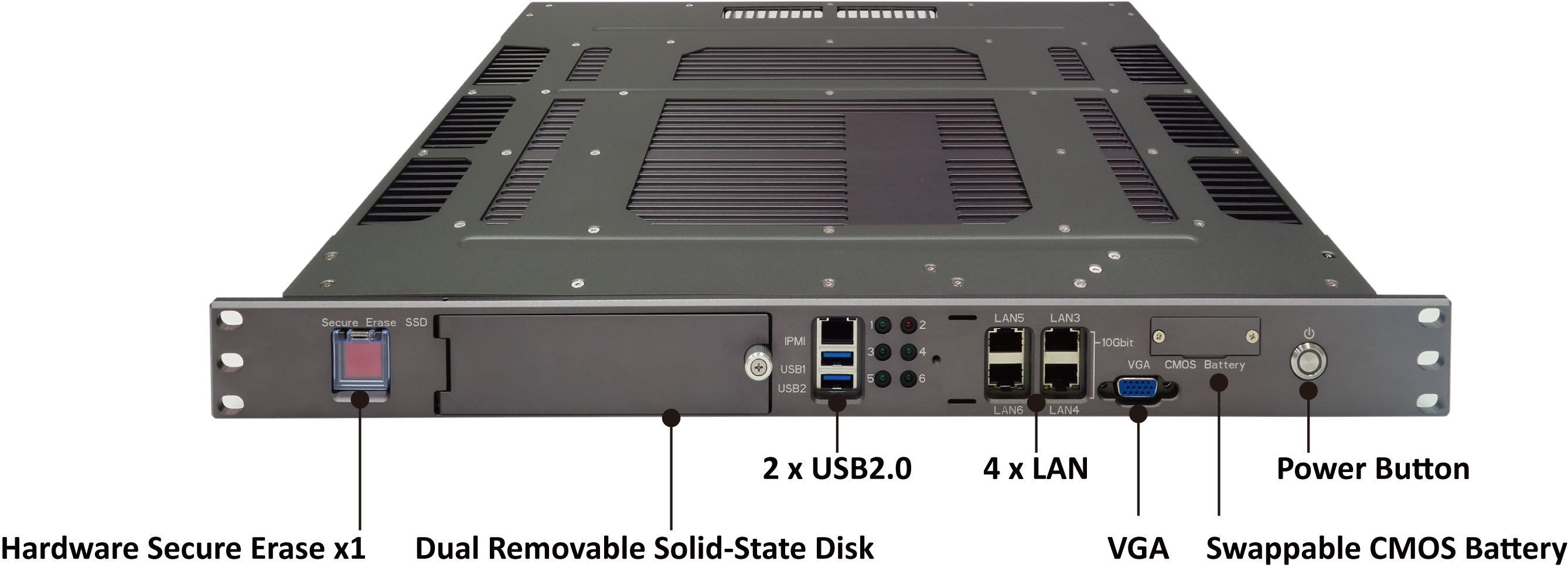

- Ultra-High Intel® Xeon® D Processor ( 16 Cores, 32 Threads, 24MB Cache )
-
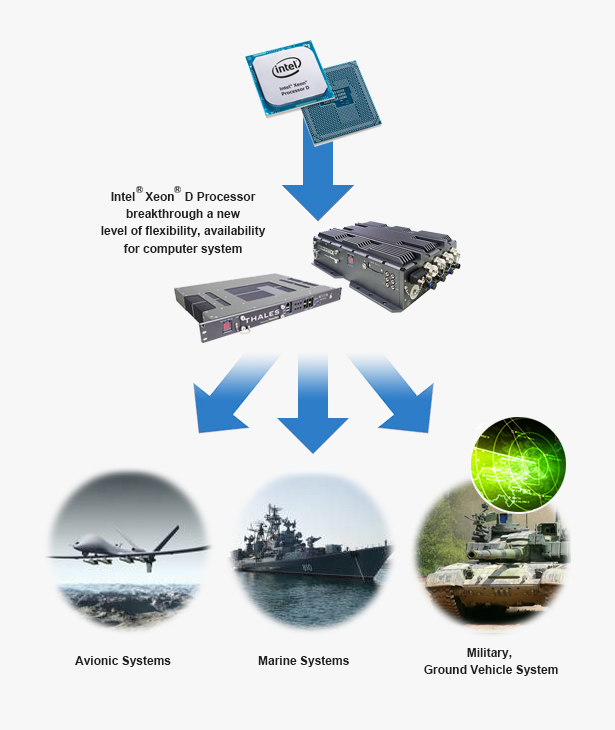
Broadwell DE:
Intel® Xeon® processor D-1500 product family offers hardware and software scalability from two up to sixteen cores, making it the perfect choice for a broad range of high-performing, low-power solutions that will bring intelligence and Intel® Xeon® reliability, availability, and serviceability (RAS) to the edge.
Enhanced performance per watt:
Intel® Xeon® processor D-1500 product family delivers exceptional value and unmatched performance density per watt. Its TDP of 19W to 65W, industry-leading 14 nm process technology and a compute-only design make it ideal for meeting the diverse needs of customers seeking mid-range low-power, high-density solutions.
Enabling more IoT Use Cases:
The Intel® Xeon® processor D-1500 product Family drives a host of new IoT opportunities for a wide range of environments, while addressing real-time optimization, and workload consolidation. Its temperature rating spans from -40°C to 85°C operating ambient conditions, which establishes new possibilities for Intel® architecture in markets that require robust products, like aerospace and industrial.
- Unique Features
-
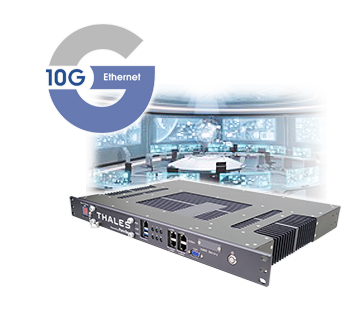
Dual 10-Gigabit Ethernet for Virtual Machine
The Intel® Ethernet Connection X557 family is a 10 Gigabit Ethernet copper networking Physical Layer (PHY) for workstation, server, and embedded designs that have critical space and power constraints. HORUS200 equipped with dual 10GbE LAN, allowing system to run under high-speed and stable transmission.
Comparing to general 1GbE LAN, 10GbE LAN provides key improvements in terms of bandwidth, latency, scalability, reliability and application performance. Moreover, 10GbE LAN is possible to support Virtual Machine application, which is a considerable function for parallel working system. Allowing multiple operation environments which are isolated from one another, yet through the same server, Virtual Machine enable several tasks to be done in one server simultaneously, suitable for limited space or portable control and command center.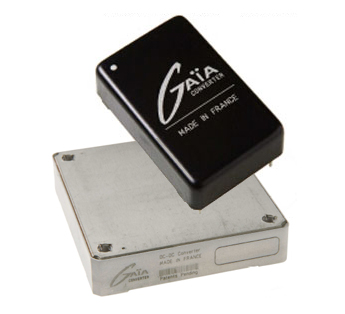
MIL-STD-1275/704 Power Supply with Voltage Transient Protections
HORUS200 is designed with MIL-STD-1275/704, protecting against vehicle/aircrafts voltage surges, spikes and transients, and even electromagnetic interference. This characteristic is well suited for the strictest military requirement and deliver optimal performance in harsh conditions.
The GAIA Hi-Rel DC/DC CONVERTER it also provides under voltage Lockout (UVLO), Output over Current Protection (OCP), Output Overvoltage Protection (OVP) and Over Temperature Protection (OTP) to made stability and safety.
Swappable CMOS Battery
Generally, to exchange the battery from a rugged solution is complicated and has the possibility to affect the original function of water and dust resistance. HORUS200 has an easy swappable battery tray allowing users to directly replace. A coin-cell battery can be seen when pulling the tray fully out of the computer; users just need to change with CR2032 battery and push the tray back and lock screw, then the replacement is completed.
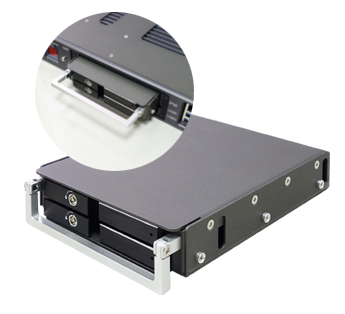
Dual Removable SSD ( Solid-state Disk )
The dual removable SSD featuring with easy-handle, quick and easy swap for maintenance and replacement. Providing compact self-contained system to store and retrieve data, removable and ruggedized SSD supports HORUS200 to suitably apply in military and ground vehicle systems, especially for command and control center when high flexibility and mobility is needed or for sudden evacuation.
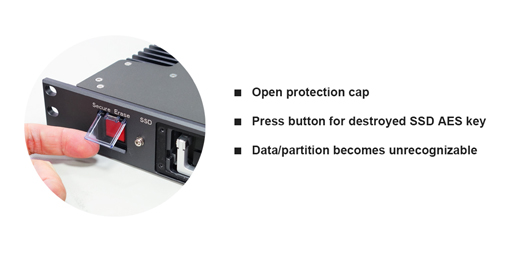
Hardware Secure Erase
Under emergency situation, when written data is required to be erased immediately, a Secure Erase Button is extremely indispensable. Instant Erase is a particular feature for SED ( Self Encryption Drive ) drive. It's faster than Quick Erase to make all written data invalid. The encryption and decryption is controlled by an AES key on the path; once the AES key is replaced by a new one, the data becomes unrecognizable.
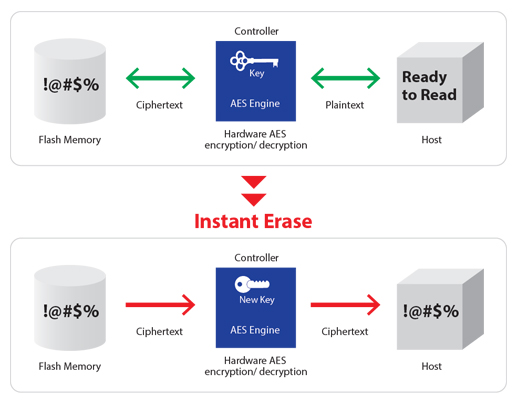
MIL-STD-810G designed for high environmental adaptation
HORUS200 is designed to meet MIL-STD-810G standard. MIL-STD-810G standard is considered the upmost principle, which guarantees the system achieves superior quality and stability when operate under various environment, especially applied in military and ground vehicle system, which can possibly run through unpredictable terrain or condition, causing sudden shock and occasional vibration.
Operating Temp. |
|
|---|---|
| 0°C to 50°C | |
System |
|
| Model | HORUS200 |
| CPU | Intel® Xeon® Processor D-1587 (Frequency 1.7GHz, Turbo Boost Frequency up to 2.3GHz), 16-Core, 32 Thread Support, 24MB Smart Cache. Build-in Turbo Boost Technology 2.0, VPro and Hyper-Threading support. |
| Memory | 4x DDR4 DIMMs Up to 128GB ECC RDIMM |
| Chipset | 2133MHz SoC, integrated with CPU |
Display |
|
| Graphics Processor | ASPEED AST2400 |
| Display Port | Resolution up to 1920x1200@60Hz 32bpp |
Storage |
|
| HDD/SSD | 2x 2.5" SSD |
Ethernet |
|
| Ethernet | Quad Gigabit Ethernet via Intel® i350-AM2 Dual 10GBase-T LAN via Intel® X557-AT2 Realtek RTL8201N PHY (dedicated IPMI) |
Front I/O |
|
| USB | 2x USB 2.0 |
| Serial Port | 1x RS-232 |
| Ethernet | 2x 10/100/1000 Gigabit Ethernet |
| DC-IN | 1x Rugged Souriau Connector ( 8ST7-08G98PN ) |
Rear I/O |
|
| Button | 1x Secure Erase Button ( SSD2 support AES Secure Erase ) 1x Power Switch with Dedicated LED |
| USB | 2x USB 3.0 |
| Ethernet |
2x 10/100/1000 Gigabit Ethernet 2x 10GBase-T Ethernet 1x IPMI |
| Dedicated LED | 2x SDD LED 4x Dual Color LED for 8bit GPIO ( Reserved ) |
| SSD/HDD Tray | 1x Dual 2.5" HDD/SSD Easy Swap Tray |
| CMOS Battery Tray | 1x Removable CR2032 CMOS Battery Tray |
Power Requirement |
|
| Power Input | MIL-STD-1275, MIL-STD 704 and DO-160 power supply ,12 to 40V ( 150W max ) |
Applications, Operating System |
|
| Applications | Military Platforms Requiring Compliance to MIL-STD-810 where Harsh Temperature, Shock, Vibration, Altitude, Dust and MIL-461 EMI Conditions |
| Operating System | Windows 10 64Bit, Windows Server 2008 R2, Windows Server 2012 R2 Ubuntu14.04, Fedora 20/23, RedHat Linux EL 7.1/7.2, Vmware ESXi 6.0, ESXi 6.5 |
Physical |
|
| Dimension ( WxDxH ) | 430 x 385 x 44.6 mm |
| Weight | 10.6 Kg (23.37lbs) |
| Chassis | SECC +Aluminum Alloy, Corrosion Resistant. |
| Finish | Anodic aluminum oxide ( Color Iron gray ) |
| Cooling | Natural Passive Convection / Conduction. No Moving Parts |
| Ingress Protection | IP50 |
Environmental |
|
| MIL-STD-810G Test | Method 507.5, Procedure II (Temperature & Humidity) Method 516.6 Shock-Procedure V Non-Operating (Mechanical Shock) Method 516.6 Shock-Procedure I Operating (Mechanical Shock) Method 514.6 Vibration Category 24/Non-Operating (Category 20 & 24, Vibration) Method 514.6 Vibration Category 20/Operating (Category 20 & 24, Vibration) Method 501.5, Procedure I (Storage/High Temperature) Method 501.5, Procedure II (Operation/High Temperature) Method 502.5, Procedure I (Storage/Low Temperature) Method 502.5, Procedure II (Operation/Low Temperature) Method 503.5, Procedure I (Temperature shock) |
| Reliability | No Moving Parts; Passive Cooling. Designed & Manufactured using ISO 9001/2000 Certified Quality Program. |
| Operating Temperature | 0 to 50°C |
| Storage Temperature | -40 to 85°C |
| EMC compliance |
MIL-STD-461E Certified : |
The rugged MIL-STD compliant system, HORUS 200 is equipped with highly effectively heat conductive and heat convective thermal solutions to meet extended temperature requirements. The heat conductive solutions uses an aluminum flat mass to place in direct contact with the processor and chipset, the heat from chips then transfers it to the case of the system via 8.0 mm copper heat pipes. In addition, the convective thermal solutions introduce airflow directed to move across the surface of a fin style heatsink placed on top of the processor and chipset. This can be done with the aid of an appropriately sized fan placed in top of the fin style heatsink. Alternately, enclosure airflow can be routed to flow across a fin style heatsink.
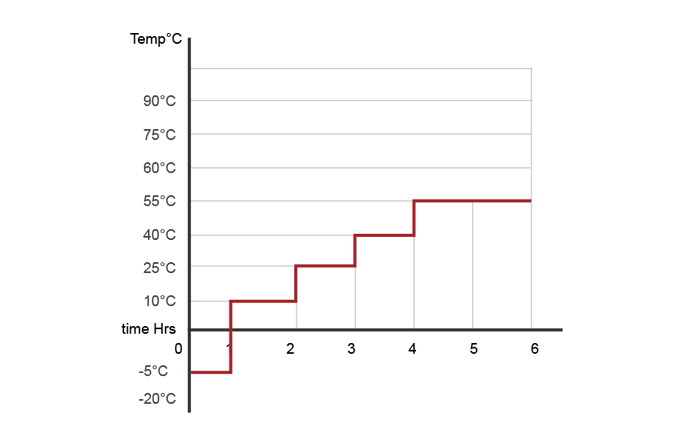
| Device Model | HORUS200 |
| Tester | Robin Chang |
| Test Result | Pass |
| Test Temperature | High 0°C~55°C / Low -5°C~0°C |
| Test Time | 5 Hours / 1 Hour |
| Test Standard | Reference IEC60068-2 |
| Test Software | Burnin test v8.1 |
| Criteria | After testing, system can't halt. |
- Test Configuration
-
Device
Configuration
CPU
Intel® Xeon® Processor D-1587
(24M Cache, Base Frequency 1.70 GHz/Max Turbo Frequency 2.3GHz)PCH
SoC
Memory
128GB ECC RDIMM DDR4 2133MHz in 4 sockets
SATAIII
64GB SSD
SATAIII
2TB SSD
LAN1/2
Intel® i350-AM2 Gigabit Ethernet
LAN3/4
Intel® i350-AM2 Gigabit Ethernet
LAN3/4
Intel® i350-AM2 Gigabit Ethernet
Test Software
Burnin test v8.1, CPU Z-1.86, iperf, Passmark USB3.0
AS SSD Benchmark 2.0.6694Chamber
KSON THS-b4t-150
Chipeng SMO-3
- Thermal Measurement
-
7starlake provides real lab testing figures to show how CPU performance is with each tailor made thermal kits as important references and design guide for system engineers. For system integration, the crucial challenge is the operation performance under high temperature, thus 7starlake conducts long time experiments to make sure the superior testing result for all critical missions. By revealing temperature at processor T junction, processor die and heat sink, 7starlake is able to analyse the thermal solution we designed achieves maximum efficacy and observe CPU performance. The high temperature testing takes 5 hours which at each temperature point we burn in HORUS 200 for one hour, from +50 to +85°C.
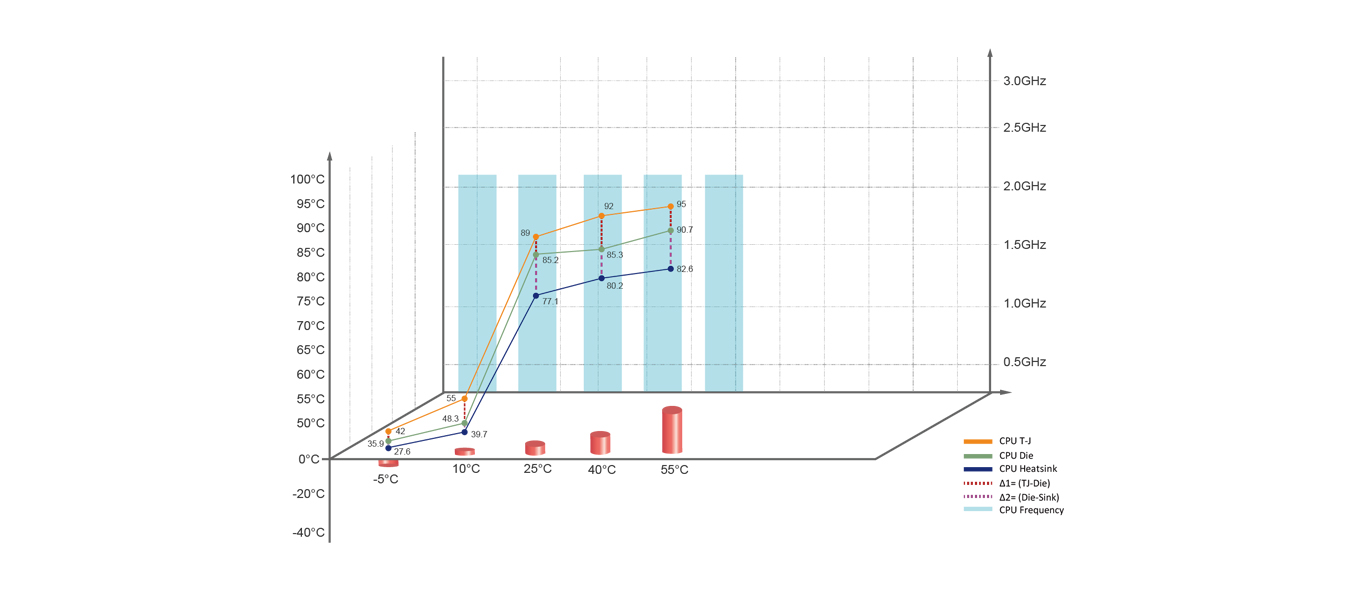
HORUS200 CPU Performance
Point -5°C 10°C 25°C 40°C 55°C CPU T-J 42 55 89 92 95 CPU Die 35.9 48.3 85.2 85.3 90.7 CPU Heatsink 27.6 39.7 77.1 80.2 82.6 CPU Frenquency (GHz) 2.1 2.1 2.1 2.1 2.1
- Patented Thermal Architecture
-
7starlake adopts special metal composed of high thermal conductive materials and particular CNC cutting to further ensure compliance with extreme temperature requirements. Both HORUS200 and SR800 could operate under +55°C with the 16-core CPU (Intel®Xeon®D-1587, 65W) running full speed non-throttling(2.1GHz). Further, they never shuts down under 85°C.
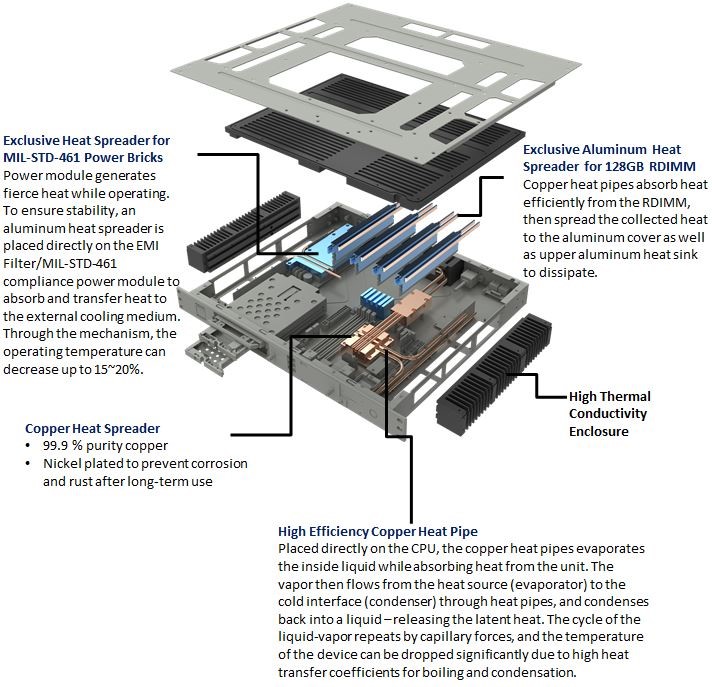
Exclusive Heat Spreader for MIL-STD-461 Power Bricks
Power module generates fierce heat while operating. To ensure stability, an aluminum heat spreader is placed directly on the EMI Filter/MIL-STD-461 compliance power module to absorb and transfer heat to the external cooling medium. Through the mechanism, the operating temperature can decrease up to 15~20%.
Exclusive Aluminum Heat Spreader for 128GB RDIMM
Copper heat pipes absorb heat efficiently from the RDIMM, then spread the collected heat to the aluminum cover as well as upper aluminum heat sink to dissipate.
High Efficiency Copper Heat Pipe
Placed directly on the CPU, the copper heat pipes evaporates the inside liquid while absorbing heat from the unit. The vapor then flows from the heat source (evaporator) to the cold interface (condenser) through heat pipes, and condenses back into a liquid – releasing the latent heat. The cycle of the liquid-vapor repeats by capillary forces, and the temperature of the device can be dropped significantly due to high heat transfer coefficients for boiling and condensation.
| Attachment | Size |
|---|---|
| HORUS200_MIL-STD-810F (Vibration_Shcok_Temperature).pdf (2.91 MB) | 2.91 MB |
| HORUS200_MIL-STD-461E (CE102; RE102; RS103).pdf (14.19 MB) | 14.19 MB |
| EMCKP3930A Thales Suisse SA.pdf (1.51 MB) | 1.51 MB |
| TDHS_Datenblatt Horus200+SR800_EN_Feb 2021.pdf (1.49 MB) | 1.49 MB |
